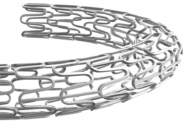One of the challenges of percutaneous coronary interventions (PCI) are <2.5 mm vessels, since complications and restenosis complications rate are higher than with >3.0 mm vessels. Drug Coated Balloons (DCB) can be a useful tool, but their efficacy and safety [vs. plain old balloon angioplasty] remains unclear. PEPCAD China SVD is a prospective and multicenter…
IN.PACT Study | Should We Start Using DCBs More Frequently in Cases of Femoropopliteal Disease?
With the new devices (drug-eluting balloons [DEB], drug-eluting stents [DES], and atherotomes) percutaneous treatment is becoming the first line of approach for femoropopliteal disease, especially when dealing with not very long total occlusions. Randomized studies and registries on the use of drug-coated balloons (DCB) in femoropopliteal disease are currently available, but their evolution beyond 2…
Long-Term Evolution of Hybrid Coronary Revascularization
Currently, myocardial revascularization surgery (MRS) and percutaneous coronary intervention (PCI) are the available strategies for multivessel coronary artery disease. However, an alternative strategy has long been developed, called hybrid coronary revascularization (HCR), where the anterior descending artery is bypassed with a graft from the mammary artery and the rest of the lesions are treated by…
Is it Possible to Reduce DAPT Time in Diabetic Patients?
Short-duration dual antiplatelet therapy (DAPT) after percutaneous coronary intervention (PCI) with DES is growing steadily, especially for chronic coronary syndromes. There is also some evidence regarding its use in acute coronary syndrome. However, diabetes is a well-known risk factor for both restenosis and thrombosis, since it involves more complex and longer lesions in vessels that…
Left Main Coronary Artery PCI Using State-of-the-Art Zotarolimus-Eluting Stents
Percutaneous coronary intervention (PCI) to the left main coronary artery (LMCA) with drug-eluting stent implantation is currently a major challenge due to the size of the vessel, the compromise of a bifurcation lesion in important branches, and the potential risk of complications. Available information on LMCA PCI comes from studies where DES stents were implanted…
Trans-Stent Gradient as a Predictor of Adverse Events at Followup
Stenting a coronary lesion should not present a drop in pressure when measuring the treated segment with fractional flow reserve (FFR). FFR based trans-stent gradient should involve a segment of the sub-expanded vessel or instent obstruction as plaque prolapse or thrombus. The link between post-stenting physiology and long-term outcomes have been looked at in several…
The New Sirolimus Eluting Balloons Are Also Effective
The technological development of drug eluting stents has allowed us to treat increasingly complex patients, with around 10% stenosis and using more, and longer stents. This situation generates a great challenge: keep using stents or use paclitaxel coated balloons (PCB). At present, there are sirolimus drug coated balloons (SCB), but we do not have enough…
Should We Start Using Ultra-Thin Struts?
The benefits of DES are well known, as well as the benefits of more recent polymer-based DES versions (even those with no polymers). However, strut size is no small matter, and might even make the difference, seeing as thinner struts are associated to better deliverability, simpler crossing profile in bifurcations, better endothelization and healing. Besides,…
Is TCA Useful for Severe Impairment of Left Ventricular Ejection Fraction?
Heart disease is the most frequent cause of heart failure and, in some observational studies, transluminal coronary angioplasty (TCA) could help improve ventricular function. The only major randomized study to compare myocardial revascularization surgery (MRS) vs. medical treatment in patients with ventricular function impairment was the STICH study, which showed no difference at 5 years,…
ESC 2022 | Should We Follow-Up with Functional Testing in High-Risk Patients after CTA?
While the need for repeat cinecoronary angiography after transluminal coronary angioplasty (TCA) has decreased with the use of drug-eluting stents and improved medical treatment, patients still present ischemic recurrence or cardiovascular events at follow-up. Using a functional test at follow-up after TCA or myocardial revascularization (CMR) is a frequent practice in our context. This is…
Longitudinal Deformation of a Stent with the POT Technique
The fractal geometry of coronary bifurcations offers a mismatch between the proximal diameter of the main branch and the distal branches that make up the bifurcation. Angioplasty in this area can be performed through different techniques depending on plaque distribution, and the particular geometry of each bifurcation. Overall, and regardless of the strategy used, there…










